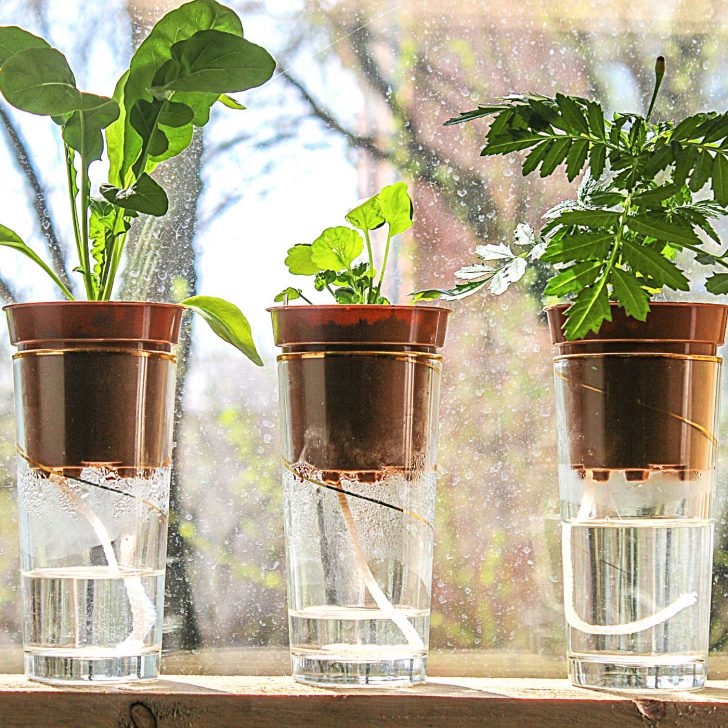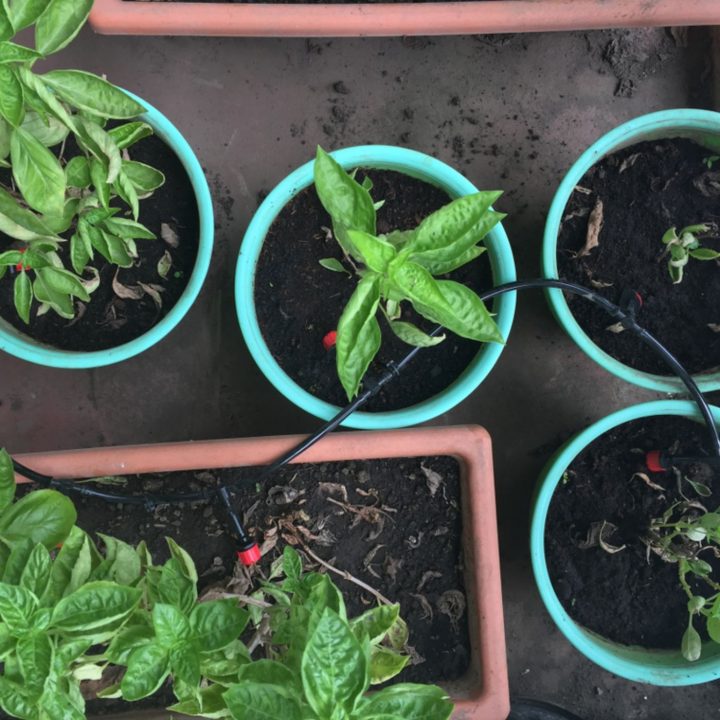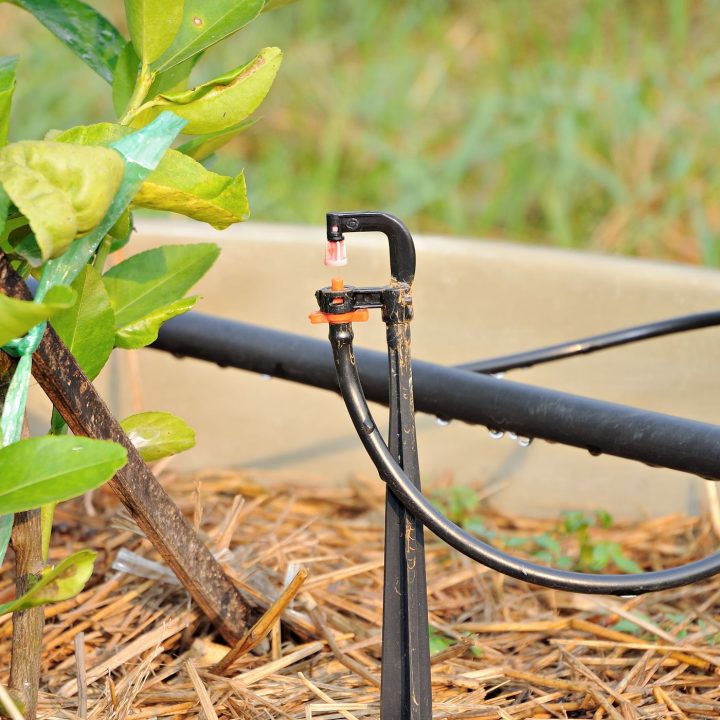Gardening can be a delightful hobby, but the task of consistently watering potted plants can sometimes be cumbersome. Ensuring that your container plants receive adequate hydration, especially during hot weather or when you’re away, can be challenging. Self-watering systems, including automatic watering systems, offer an excellent solution to these common issues, making plant care more convenient and efficient.
In this article, we’ll explore four brilliant self-watering systems that will revolutionize your gardening experience. These systems are designed to provide your plants with consistent moisture, reducing the need for frequent manual watering. Whether you’re a busy gardener or simply looking to simplify your plant care routine, these self-watering systems will make it easier to maintain healthy, thriving plants with minimal effort.
Table of Contents
Introduction to Self-Watering Systems
Self-watering systems are designed to provide plants with a consistent water supply, reducing the need for manual watering. One popular option is the drip irrigation kit, which offers an efficient and dependable way to water plants. These systems are particularly useful for busy gardeners, those who travel frequently, or anyone looking to ensure their plants thrive with minimal effort. Below, we explore some of the most popular types of self-watering systems:
Types of Self-Watering Systems
Self-watering systems come in various forms, each with its unique advantages and suitability for different plant types and environments. Understanding these systems will help you choose the best one for your needs.
- Wick Watering Systems: Utilize absorbent wicks to draw water from a reservoir into the soil.
- Bottle Watering Systems: Use inverted bottles to slowly release water into the plant’s soil.
- Drip Irrigation Systems: Deliver water directly to the plant’s base through a network of tubes and emitters. Drip heads are positioned near the base of the plants for effective watering.
- Micro Sprayers: Distribute water evenly across the soil surface using small sprinklers.

Wick Watering Systems
Wick watering systems are a simple yet effective solution for keeping your potted plants hydrated. This system uses a wick, typically made from a highly absorbent material like cotton or nylon, to draw water from a reservoir into the soil.
Advantages:
- Consistent Moisture: Provides a steady supply of water, reducing the risk of over or under-watering.
- Low Maintenance: Once set up, it requires minimal attention, making it perfect for busy or forgetful gardeners.
- Versatility: Suitable for both indoor and outdoor plants and can be used with various container sizes.
Bottle Watering Systems
Bottle watering systems offer a simple and effective method for keeping your potted plants hydrated. This system uses inverted bottles to release water slowly into the soil, ensuring your plants receive a consistent supply of moisture.
Advantages:
- Easy to Set Up: Requires minimal tools and can be assembled quickly.
- Recycled Materials: Promotes the use of recycled bottles, reducing waste.
- Versatile: Suitable for both indoor and outdoor plants and various pot sizes.

Drip Irrigation Kit Systems
Drip irrigation systems are a precise and efficient way to water potted plants. This method uses a network of tubes, drip heads, and emitters to deliver water directly to the plant’s roots, minimizing water waste and ensuring even moisture distribution.
Many modern drip irrigation systems can be powered using a USB cable, making them convenient and easy to set up.
Advantages:
- Water Efficiency: Reduces evaporation and runoff by delivering water directly to the roots.
- Customizable: Easily adjust the system to fit various pot sizes and plant needs.
- Healthier Plants: Prevents over-watering and reduces the risk of fungal diseases by keeping foliage dry.
Micro Sprayers
Micro sprayers are a versatile and efficient method for watering potted plants, providing a gentle and even distribution of water across the soil surface. These small sprinklers can be adjusted to deliver varying amounts of water, making them suitable for a wide range of plant types and pot sizes.
Advantages:
- Even Coverage: Ensures all areas of the soil receive water, promoting uniform growth.
- Adjustable: Easily modify the water output and spray direction.
- Time-Saving: Can be connected to a timer for automated watering.
Choosing the Right System for Your Indoor Potted Plants
Selecting the best self-watering system for your plants involves considering several factors to ensure optimal hydration and health.
Plant Type: Different plants have varying water needs. For example, succulents require less frequent watering compared to tropical plants. If you have hanging plants, consider systems that can be easily mounted and provide consistent water flow to elevated positions.
Pot Size: The size of your pots will influence the type of self-watering system you need. Larger pots may require more robust systems, while a small pot can benefit from a more delicate setup. Ensure the system can handle the specific needs of both large and small pots to maintain plant health, especially during vacations.
Factors to Consider:
- Plant Type: Different plants have varying water requirements. For instance, succulents need less frequent watering compared to tropical plants.
- Pot Size: Larger pots may benefit more from systems like drip irrigation or micro sprayers, while smaller pots might be well-suited for wick or bottle watering systems.
- Environment: Indoor plants might require different setups compared to outdoor ones. Outdoor plants exposed to wind and sun may need more consistent watering.
- Maintenance Level: Choose a system that matches your availability and willingness to maintain it. Drip irrigation and micro sprayers often require more initial setup but less frequent manual intervention, while wick and bottle systems are easier to set up but might need regular refilling and checking.
- Cost and Resources: Evaluate the cost of the system and the resources you have available. DIY options like bottle watering are cost-effective, while drip irrigation systems might require a higher initial investment.
Practical Tips:
- Test Small First: Before fully committing, test a small-scale version of the system to ensure it works well for your plants.
- Monitor Soil Moisture: Use moisture sensors to monitor and adjust the system as needed.
- Combine Systems: Sometimes, combining different systems can provide the best results, especially for diverse plant collections.

Installation and Maintenance Tips
Proper installation and maintenance of self-watering systems are crucial to ensure their efficiency and longevity. It is recommended to check the system every few weeks to ensure it is functioning correctly. Here are some essential tips:
Wick Watering:
- Installation: Cut the wick to a length that reaches from the water reservoir to the plant’s soil. Secure one end of the wick in the water reservoir and bury the other end in the soil.
- Maintenance: Ensure the wick is fully saturated and in contact with both the water and soil. Use a water reservoir that can hold enough water to last several days. Check periodically for wear and replace if necessary.
Bottle Watering:
- Installation: Fill the bottle with water and invert it into the soil, ensuring it’s secure and won’t tip over. Use watering spikes for better control if using plastic bottles.
- Maintenance: Ensure the bottle is securely inserted to prevent it from tipping over. Check periodically to refill the bottle as needed.
Drip Irrigation:
- Installation: Lay out the main tubing and connect it to the water source. Attach emitters near the base of each plant. Set up a timer to automate watering schedules.
- Maintenance: Regularly check emitters for clogs or leaks. Adjust the timer settings seasonally to match the plants’ changing water requirements. Clean the system periodically to ensure optimal performance.
Micro Sprayers:
- Installation: Position sprayers around the plants, connecting them to the main tubing. Adjust the spray pattern to cover the soil evenly.
- Maintenance: Check sprayers regularly for clogs or damage. Clean the system periodically to maintain efficiency. Adjust the sprayers as plants grow or if you add new pots to the setup.
Troubleshooting Common Issues
Even the best self-watering systems can encounter problems. Resolving these common issues can be a life saver, especially during busy days or when you are away from home. Here’s how to troubleshoot common issues to keep your plants healthy and well-hydrated:
Wick Watering:
- Dry Soil and Wick: Ensure the soil in the plant container is thoroughly watered. Fill the water reservoir and soak the wick before setting it up.
Bottle Watering:
- Bottle Tips Over: Secure the bottle more firmly in the soil or use a support structure.
- Water Not Releasing: Poke a small hole in the bottle cap or use a bottle with a narrower neck.
Drip Irrigation:
- Clogged Emitters: Clean or replace clogged emitters regularly to maintain water flow.
- Uneven Water Distribution: Adjust the emitters’ positions and ensure the tubing is properly connected and not kinked.
Micro Sprayers:
- Sprayers Not Working: Check for blockages and clean the nozzles. Ensure the water pressure is adequate.
- Uneven Water Coverage: Adjust the spray patterns and check the positioning of the sprayers.
General Tips:
- Leaks: Inspect all connections and tubing for leaks. Tighten or replace faulty parts.
- System Not Working at All: Ensure the water source is active and the timer is functioning correctly. Check for any breaks or disconnections in the tubing.
By addressing these common issues, you can maintain the efficiency of your self-watering system and ensure your plants receive the water they need.
Final Thoughts
Automatic watering systems are invaluable for anyone looking to maintain healthy, vibrant potted plants with minimal effort. These systems ensure your plants receive consistent hydration, which is crucial for their growth and well-being. By choosing the right system—whether it’s a simple wick setup, a DIY bottle method, a precise drip irrigation system, or versatile micro sprayers—you can tailor your approach to meet your plants’ specific needs.
Proper installation and regular maintenance are key to maximizing the efficiency of these systems. Troubleshooting common issues, such as dry soil or clogged emitters, will keep your setup running smoothly. With these automatic watering solutions, you can enjoy lush, thriving plants without the constant worry of manual watering.
Embrace the convenience and peace of mind that comes with automatic watering systems, and watch your potted plants flourish. These systems are particularly beneficial for indoor potted plants, offering features like remote control, customization based on local weather, and deep soil watering, making them ideal for bedrooms, offices, balconies, and gardens.
